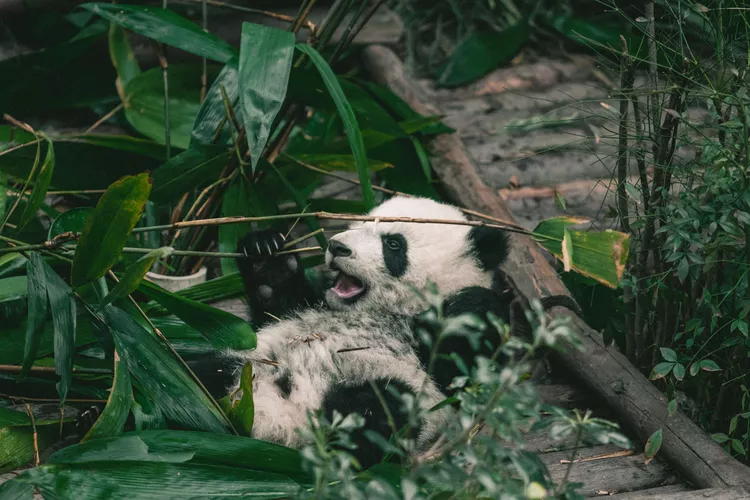Summary
Giant Panda Habitat
Sadly, 80% of the Giant Panda’s habitat was destroyed in just 40 years due to human activities, particularly clear-cutting their forest habitats from 1950-1990. Presently, researchers estimate that there are only about 1,000 giant pandas remaining in the wild. Moreover, studies indicate that 85% of China’s wild Giant Pandas reside in Sichuan province.
Breeding Center Mission
Established in 1987 and opened to the public in 1995, the breeding base’s primary goal is to increase the population of giant pandas and eventually release some of the animals back into their natural habitats. Regardless of your views on animal captivity, especially in a country that has often faced criticism for its treatment of animals, the efforts at the Giant Panda Breeding and Research Base aim to boost the panda population and enhance public understanding of this remarkable species.
Giant pandas are solitary creatures that prefer to remain hidden in their mountainous bamboo forest homes located in Sichuan province.
Location of the Base
The center is situated approximately 7 miles (11km) north of downtown Chengdu in a northern suburb. Plan to spend about 30-45 minutes traveling from the city center.
The address is 1375 Xiongmao Avenue, Chenghua, Chengdu | 熊猫大道1375号. Interestingly, the street name translates to “Panda” Avenue.

Panda Base Features
Around 20 giant pandas live at the base, where they can roam freely in open grounds. The facility features a nursery for baby pandas and a museum that covers topics related to pandas’ environment and conservation efforts, along with separate butterfly and vertebrate museums. Other endangered species, such as the red panda and the black-necked crane, are also part of the breeding program.
Visiting Essentials
Getting there: Taking a taxi is the most convenient option, with a taxi stand available outside the entrance for onward journeys. Public buses do operate in the area, however, they typically require multiple changes. Organized tours that include transportation can also be coordinated through local hotels. For more details, refer to the Panda Breeding Base website’s transport information.
Opening Hours: Open daily from 7:30am to 6:00pm.
Recommended Time for Visit: Aim for a visit duration of 2-4 hours to fully enjoy the experience.
Stroller Friendly? Yes, with most areas being accessible; however, some steps and uneven terrain may be encountered.
It’s advisable to arrive early during feeding hours (8-10am) for the best chance to observe the pandas engaging in their daily activities, as they tend to sleep for the remainder of the day.
Expert Comments
Years ago, we took our three-year-old son, anticipating he would enjoy the pandas, but honestly, it was us who were excited to see them! The three-hour flight from Shanghai to Chengdu was well worth it for a visit to the Breeding Center, as it afforded us an intimate encounter with the pandas.
During our visit, we witnessed a mother panda and her cub playing joyfully on the grass and around their climbing structure for nearly an hour. The mother attempted to coax her cub into drinking some milk, but he was more interested in playfully tackling her, creating an adorable scene that drew a small crowd.
In another section, an adult panda was busy indulging in a feast of bamboo. After carefully peeling away the outer bark and consuming the inner pulp, he leaned back with his arms over his head to grab another branch. An adult panda consumes up to 40 kg (over 80 pounds) of bamboo daily.
Nearby, another panda persistently tried to dig through the wall of its enclosure, perhaps in search of a companion.
The breeding base was a delightful experience overall. The grounds are beautifully maintained and feature a large lake populated by numerous birds, including swans and peacocks. My son thoroughly enjoyed the visit, although he did wonder where the gorillas were—after all, in his mind, where there are pandas, there ought to be gorillas too.





